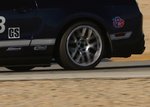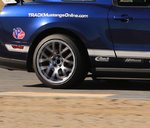Mad Hatter
Gotta go Faster
Ok, so I have a bunch or articles spinning around in my head.... and I just got in from under the car measuring the uca and lca angles....
This is what I got so far...

My UCA is at stock length and in the upper of three positions on the car (what a pain to install). The LCA is in the middle position. Both UCA and LCA are BMR gear.
If I am trying to add a little more squat (less antisquat), I could raise the LCA to the upper position of three. and/or lower the rear suspension a little to move the instant center further forward??
If I did both, the intersection would be below the neutral line and the instant center would be further forward. Should I be aiming to intersect closer to the center of gravity??
Am I on the right track? or .... I don't just know SQUAT!
couldn't resist that!!
This is what I got so far...

My UCA is at stock length and in the upper of three positions on the car (what a pain to install). The LCA is in the middle position. Both UCA and LCA are BMR gear.
If I am trying to add a little more squat (less antisquat), I could raise the LCA to the upper position of three. and/or lower the rear suspension a little to move the instant center further forward??
If I did both, the intersection would be below the neutral line and the instant center would be further forward. Should I be aiming to intersect closer to the center of gravity??
Am I on the right track? or .... I don't just know SQUAT!
couldn't resist that!!



















